
The Beautiful Architecture of Prague
If you're new here, you may want to subscribe to my RSS feed. Thanks for visiting!
Stunning architecture abounds in beautiful Prague. Prague Castle sits grandly atop the hill overlooking the whole city while charming cobblestone streets wind their way down to the banks of the lovely Vlatva river flowing gently under the famed Charles Bridge.


Prague Castle
At the top of a steep hill sits Prague Castle, overlooking the Malá Strana district below. Consisting of historical palaces, offices, churches, fortified buildings and expansive gardens, the castle complex is one of the largest castle complexes in the world, covering an area of 45 hectares. Today, it is the official office of the President of the Czech Republic. Be advised that if you are on a short visit to this enchanted city, be sure to budget your time carefully as you can spend many hours here alone.

Founded in the 9th century, the castle served as the seat of Czech rulers and later presidents. Notably, the castle buildings represent virtually every architectural style of the last millennium. For example, the Gothic-style St Vitus Cathedral sitting within the complex was finished in 1929 after original construction was initiated in the 11th century. At the center of the castle complex lies the Old Royal Palace. The impressive vaulted ceiling of the Vladislav Hall is a highlight of the castle visit. Yet another remarkable historic landmark of the castle is the Romanesque St. George’s Basilica where there is a monastery, several palaces, gardens, defense towers and several museums.
From Prague Castle, the panoramic view of the city is spectacular. While most of the castle areas are open to tourists, photographing permissions must be purchased. Audio guide services and guided tours are also available.
St. Vitus Cathedral
Visible throughout the city, the Gothic St Vitus Cathedral wows with its massive size and elaborate design.

St. Vitus Cathedral – History
The cathedral as it stands today is the third of a series of religious buildings all dedicated to St. Vitus. In the beginning, the first church was an early Romanesque rotunda founded by Wenceslaus I, Duke of Bohemia in 930. A Roman basilica was built in the year 1060.

Between 1344 and 1326, the St. Wencelas Chapel was built to house the relics of the saint. While the chapel is not open to the public, it can be viewed from the doorways.
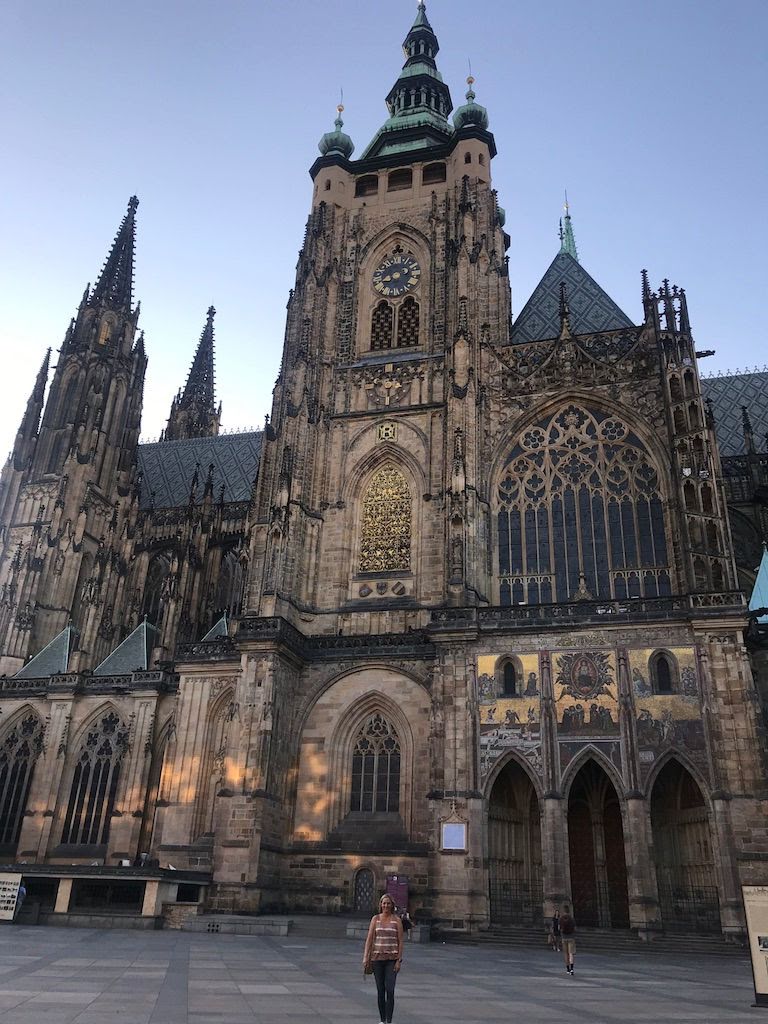
Construction of the present-day Gothic Cathedral began in 1344 and progressed slowly. First, the Hussite Wars in the first half of the 15th century caused the entire building process to come to a halt. Consequently, the cathedral doesn’t have any Renaissance or Baroque influences as it remained half built for hundreds of years.

Next, in 1844, efforts launched to finally complete the cathedral. A society under the full name of “Union for Completion of the Cathedral of St. Vitus in Prague” was formed with the goal to repair and complete the structure.

While a ticket is required to tour the entire cathedral, it is possible to visit just the entrance portion for free, where you can see some of the stained windows and the gothic vaults. However, be advised you will be joined by quite a crowd!
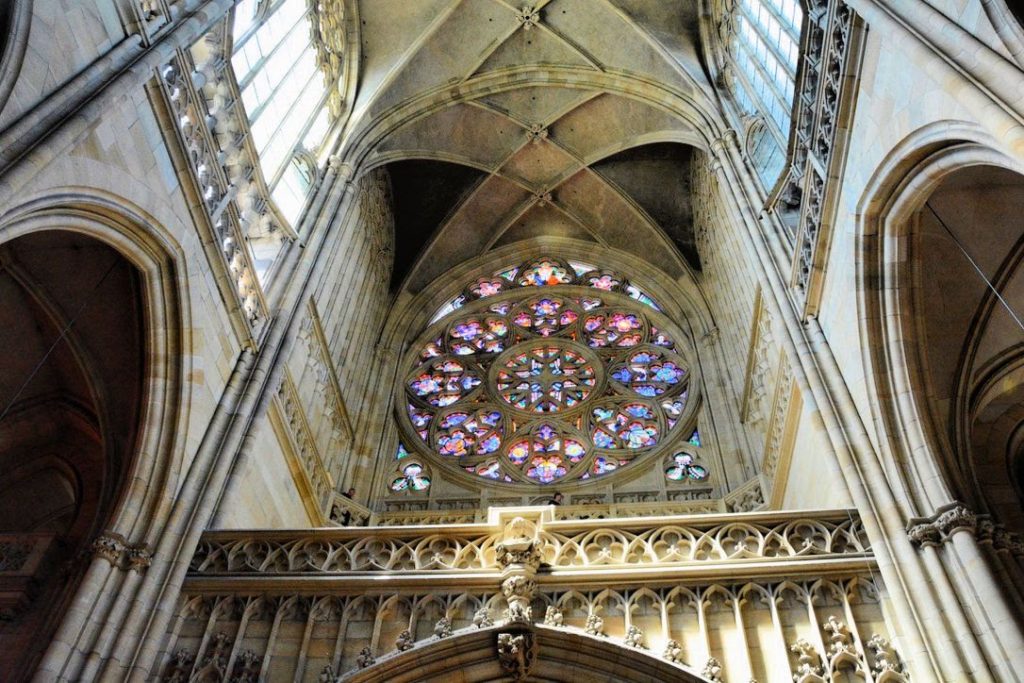
Malá Strana
Located directly beneath Prague Castle is one of Prague’s oldest districts, Malá Strana (Little Quarter). Additionally, our fabulous hotel, the Alchymist Grand Hotel was located here and you can read all about it here.

St. Nicholas Church
Next on the itinerary is the Baroque masterpiece must-see, the St. Nicholas Church. Full of frescoes, statues, carvings, and paintings, all in the High Baroque Style, building was first begun in 1703 and was completed in 1761.





Old Town Square
Next stop, Old Town Square is lovely and lively with many attractions to view. For example, one of Prague’s best known attractions, the Prague Astronomical Clock, located on the southern wall of Old Town Hall, delights tourists with its hourly procession show since the 15th century.

Next and across the square is the majestic Church of Our Lady before Týn with its impressive twin spires.

Still within the square is the Jan Hus Memorial and the St. Nicholas Cathedral (different from the St. Nicholas Church).

The Jewish Quarter – Josefov
The Josefov, Prague’s Jewish Quarter, is a lovely part of Old Town through which to meander. For instance, there are several important Jewish landmarks, including the Klausová Synagogue, the original Old-New Synagogue and the Old Jewish Cemetery. However, one note is that the admission fee is relatively high to see the Jewish Museum, the synagogues and the Old Jewish Cemetery.

The Charles Bridge
Next, wake up early, avoid the crowds and head to the gorgeous Charles Bridge, the most iconic landmark of Prague. The bridge is lined with saintly statues, while looming medieval towers bookend it. Visitors can also climb up the Old Town Bridge Tower on the eastern end of the bridge. Again, it gets incredibly busy during the day and the evening, which makes it harder to enjoy its beauty. We crossed the bridge at 9am one day and consequently, it was nearly empty.
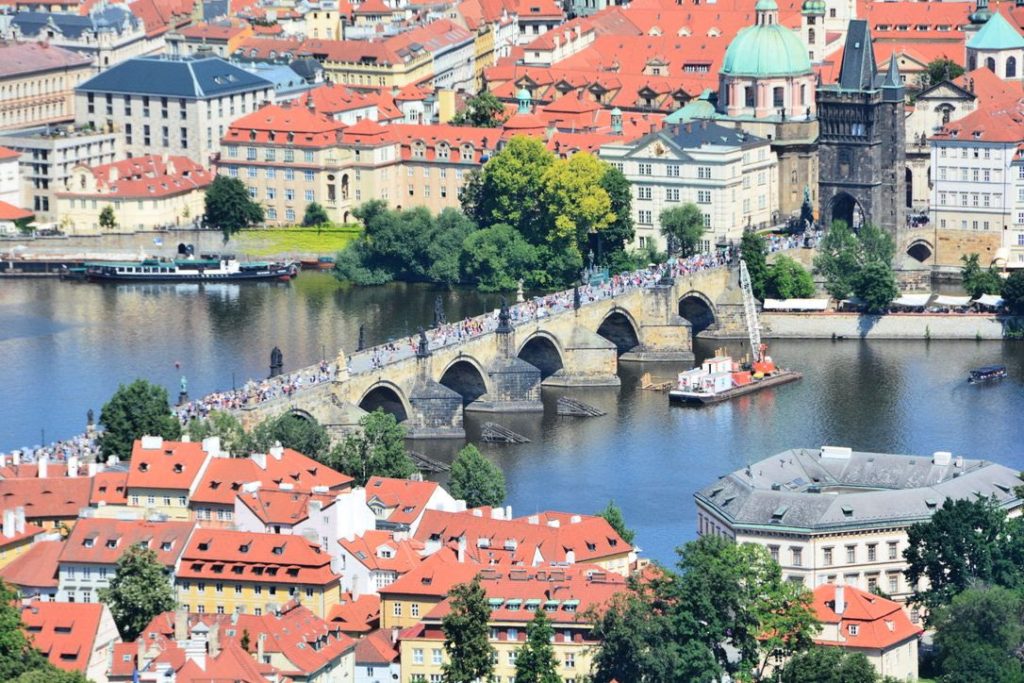
Frank Gehry’s “Dancing House”
Heading down the riverfront, you will arrive at an example of Prague’s modern side – the architectural masterpiece known as the Dancing House, designed by famed (and Los Angeles based) architect Frank Gehry.

Petrin Views
If you want an even better view of Prague than the one from Prague Castle, head up the hill to the Petrin Hill Lookout Tower. Even though there is a small fee, it is definitely worth it. From here you can see all of Prague, including the Charles Bridge, Old Town and the iconic red rooftops of the city. Finally, an added bonus is that the tower is located in a lovely Petrin Park which was lush, green and refreshingly uncrowded when we visited in the summer

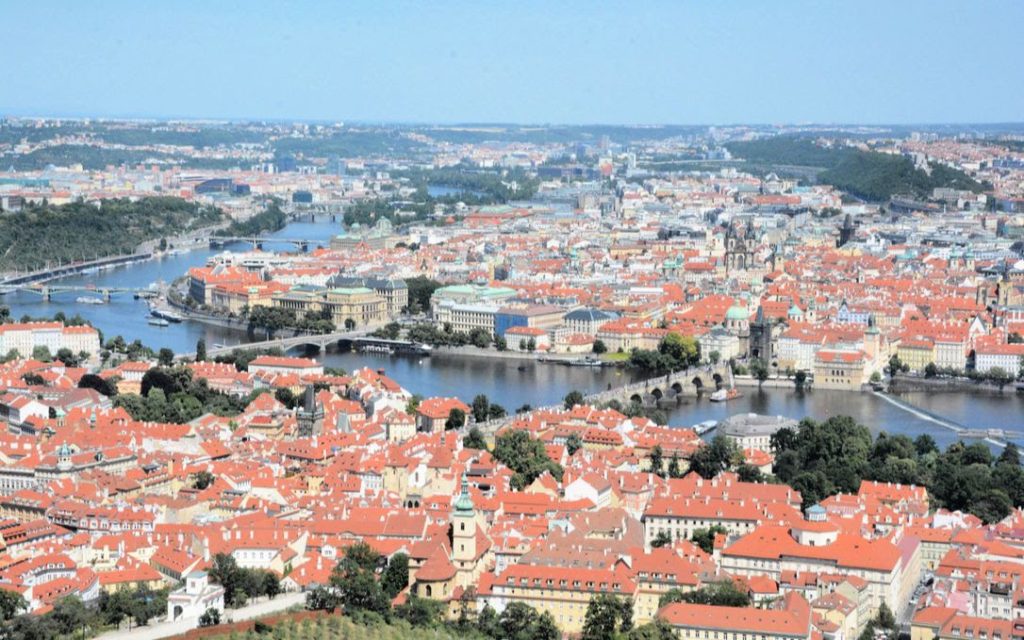
The Loreta Church
Famed for possessing a replica of the original Santa Casa in Loreto, Italy, a lovely church is the 17th century Loreta Church. Not far from the bustling castle, the visit to the Loreta Church was tranquil and decidedly uncrowded.

How to Get Around in Prague
From the airport, we took a taxi which we booked through a desk at the airport (to make sure it is legitimate). Additionally, Uber is also available in Prague.

The best way to get around and experience the city’s charm is walking. However, public transportation is very easy to use as well. For example, there is a 72-hour ticket for 310 CZK ($13 USD) or you can purchase a 30 or 90-minute tickets to quickly get around the city.
Where to Stay
While there is no shortage of lovely places to stay, we were hosted by the gorgeous Alchymyst Grand Hotel. For more info, read the article here.
Do you love reading about beautiful art, architecture and cultural travel? Then please sign up for my newsletter to stay up to date! And as always, thank you for stopping by.







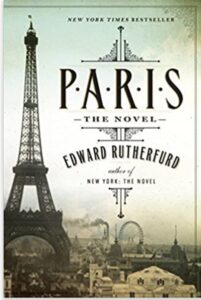


















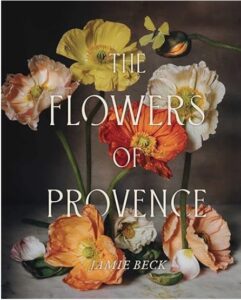

Cindy
February 11, 2020 at 7:34 amYour pictures are amazing. I have wanted to go to Prague and it’s on the bucket list just haven’t gotten to that check box yet. Going to have to do that soon.
Alexis
February 11, 2020 at 8:04 amWow! Prague is so beautiful and you have provided such great information about the city sites! I would love to go and explore the city with this information now ! Thank you!
Angie
February 11, 2020 at 10:55 amAbsolutely stunning. I have honestly never thought to travel there but it looks SO amazing. Love that Astronomical Clock so cool.
Missy
February 11, 2020 at 6:39 pmThose are beautiful photos of Prague. Thank s for the tip on the 72 hour ticket.
Bexa
March 5, 2020 at 5:59 amWow! Prague looks absolutely beautiful and those views across the city are stunning! I’ve never been before, but it’s a destination definitely on my travel bucket list! It looks like a really interesting place with lots to see and do. Thanks for sharing your gorgeous photos! <3 xx
Bexa | http://www.hellobexa.com
Anda
April 26, 2020 at 7:28 amI loved Prague, it’s a stunning city. Beautiful photos too!
Briana Nickas
April 30, 2020 at 8:29 amWow… these photos are incredible! Prague looks amazing! Adding it to my bucket list now. Thanks for sharing these pics! – Briana @ Next Destination Unknown | https://www.nextdestinationunknown.com/
Thanks for sharing these pics! – Briana @ Next Destination Unknown | https://www.nextdestinationunknown.com/